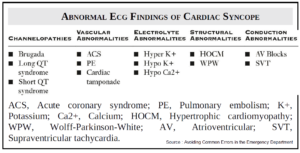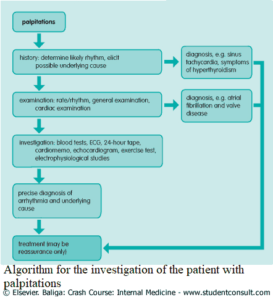Table of Contents
Emergency providers (EP) frequently evaluate patients with acute chest pain. While most EPs rely on traditional risk factors for coronary artery disease (CAD) to aid their evaluation, they should also be cognizant that there are nontraditional risk factors that can impact the evaluation of patients with acute chest pain. Failure to consider these nontraditional risk factors may lead EPs to inappropriately determine that a patient is at low risk for an acute coronary syndrome (ACS). These nontraditional risk factors include :
- Chronic kidney disease (CKD)
- Radiation therapy (RT)
- Systemic lupus erythematosus (SLE)
- Rheumatoid arthritis (RA)
- Corticosteroid therapy
- Human immunodeficiency virus (HIV)
Chronic Kidney Disease (CKD)
Cardiovascular disease is the leading cause of death among patients with CKD. CKD has been shown to be an independent risk factor for CAD. There is a 40% to 50% rate of significant CAD on angiogram of patients with recent-onset end-stage renal disease (ESRD). Even in mild renal impairment, there is an increased risk of CAD and ACS. Patients with Stage IV CKD have a staggering 5-year mortality of 45.7%. In fact, even in patients with Stage II CKD, the 5-year mortality is 19.5%. Patients with any degree of renal dysfunction should be considered to have an increased risk of CAD.
Radiation Therapy (RT)
RT to the chest has been shown to be a risk factor for the development of CAD. Chest RT is a common adjunct to chemotherapy in select lymphomas and breast cancer. Risk factors for the development of radiation-induced CAD include :
- Higher dose of radiation
- Younger age at time of exposure
- Traditional cardiac risk factors
A meta-analysis of patients from early trials of adjunct RT for breast cancer demonstrated a 27% increase in mortality from heart disease. It should be noted that radiation techniques have changed substantially since these early studies and modern RT probably confer less risk. In most cases, CAD does not develop until more than a decade after exposure. Many patients may forget to report their distal radiation treatment. It is important for EPs to inquire about RT to the chest, especially in patients who have a history of breast cancer or lymphoma.
Systemic Lupus Erythematosus (SLE)
SLE is a common disorder that involves chronic inflammation in multiple organ systems, which often includes the cardiovascular system. It is well established that patients with SLE have an increased risk for myocardial infarction (MI). This risk is especially elevated in young female patients with SLE. A study using age-matched controls demonstrated a 50-fold increase in the rate of MI in female SLE patients aged 35 to 44 years. From autopsy studies, it is known that patients with SLE have an increased rate of atherosclerosis compared to the general population. The common treatment for SLE, chronic corticosteroid use, has also been associated with higher rates of MI in this population. EPs should have a heightened suspicion for ACS in patients with SLE, especially younger female patients.
Rheumatoid arthritis (RA)
Inflammatory joint diseases (IJD), especially RA, are associated with a substantially increased risk of CAD. Patients with IJD have a higher risk of premature death compared to the general population, and most of this risk can be attributed to CAD. A Dutch population-based study found that the development of CAD in patients with RA was similar to that of patients with diabetes mellitus (DM). A large meta-analysis showed patients with RA had a relative risk of 1.48 for developing CAD compared to patients without RA. Special care should be taken when evaluating patients with RA, or other IJD, who present with acute chest pain, as these patients have an increased risk of CAD similar to that of patients with DM.
Corticosteroid Therapy
Long-term corticosteroid treatment is used for the management of several conditions that include organ transplantation, inflammatory bowel disease, SLE, and RA. Many of these conditions independently increase a patient’s risk of developing CAD; however, corticosteroids themselves also increase this risk. Long-term corticosteroid use is associated with metabolic and hemodynamic changes that include :
- Hyperlipidemia
- Insulin resistance
- Weight gain
- Central obesity
A large case-controlled cohort study found a relative risk of acute MI to be 1.42 for patients on long-term oral corticosteroids compared to nonusers. Long-term corticosteroid should be considered a risk factor for CAD due to its side effects and the underlying disease for which they have been prescribed.
Human Immunodeficiency Virus (HIV)
Patients infected with HIV have been shown to be at increased risk of CAD and ACS, the etiology of which is likely multifactorial. Replication of HIV appears to directly increase the risk of CAD. A study that compared continuous with intermittent antiretroviral therapy (ART) showed a relative risk of 1.5 for nonfatal cardiovascular events for patients in the intermittent ART arm. Antiretroviral therapy (ART) is associated with:
- Hyperlipidemia
- Decreased high-density lipoprotein
- Insulin resistance
Several large cohort studies have shown an increased rate of MI, specifically treatment with a protease inhibitor (PI). However, two large cohort studies failed to show an increased rate of MI or symptomatic heart disease in patients taking ART. Despite some conflicting data, patients with HIV and AIDS are likely at a higher risk for CAD and ACS.
Key Points
- Patients with any degree of CKD should be considered to have an increased risk of CAD.
- SLE confers a 50-fold increase in the rate of MI in female patients aged 35 to 44 years.
- Patients with IJD have a risk of CAD similar to that of patients with DM.
- Long-term corticosteroid use causes hyperlipidemia, insulin resistance, weight gain, and central obesity and is a risk factor for CAD.
- HIV patients may be at increased risk of CAD and ACS.



